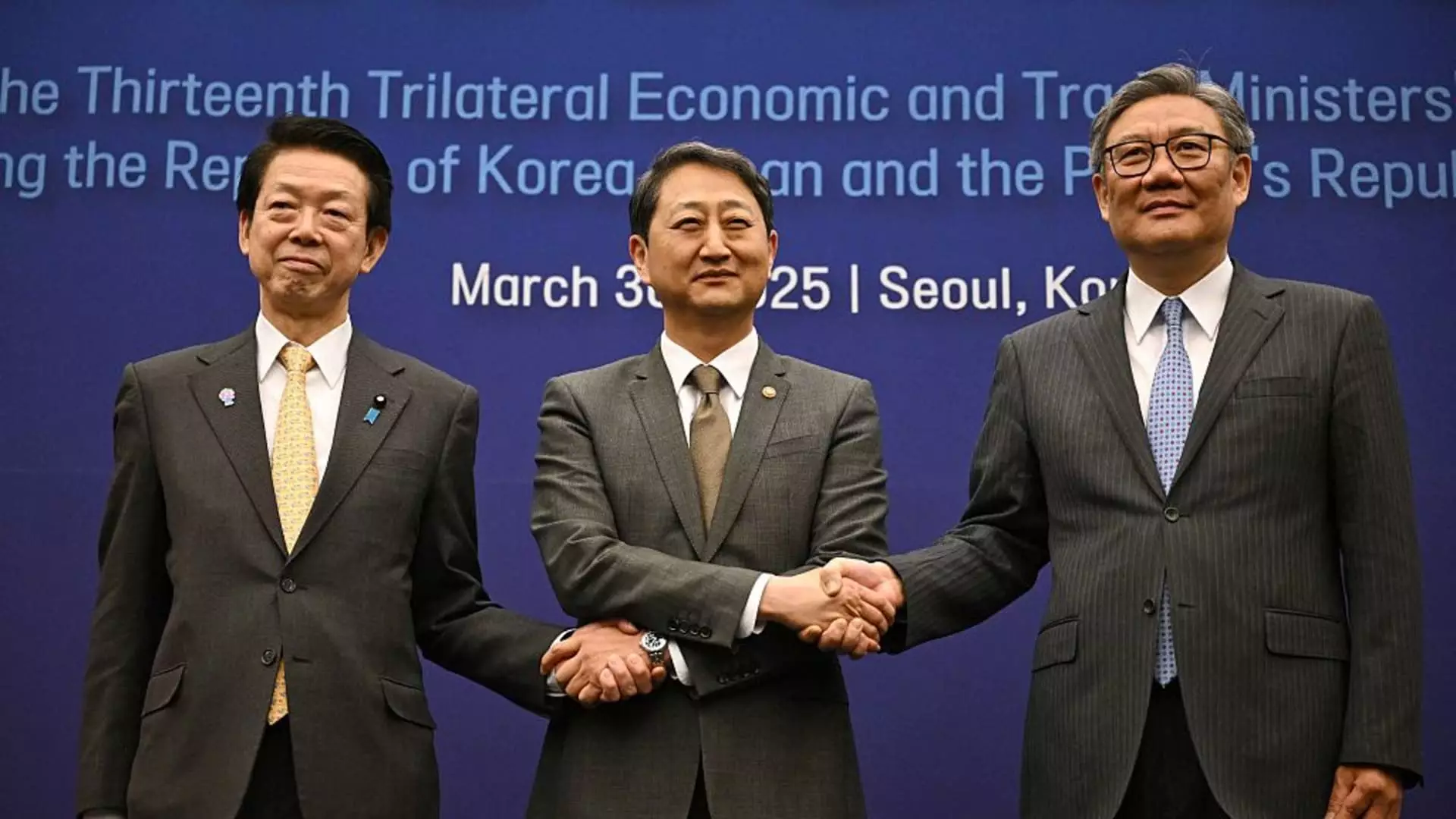In a dynamic hullabaloo of geopolitical maneuvering, South Korea, China, and Japan have renewed their economic dialogue after a five-year hiatus, igniting hopes for reinvigorated trade relationships among the three economic powerhouses. In a region characterized by both remarkable economic potential and significant political discord, this renewed cooperation demonstrates not just pragmatism but the urgent necessity to navigate the choppy waters of global trade, particularly in the shadow of U.S. tariffs imposed by President Donald Trump.
This dialogue, which took place amidst the dread of impending tariffs, signifies a conscious departure from isolationism towards collective action. The rhetoric of the South Korean Trade Minister Ahn Duk-geun, referring to the potential of a South Korea-Japan-China free trade agreement, reflects an ambition that has been lacking in the region. Not only does such cooperation promise to bolster the economies of these nations, but it may also serve to stabilize a region that has faced increasing external pressures and perennial internal disputes.
Trading on Unstable Ground
However, the backdrop of this cooperative overture is riddled with complexities. The three nations have routinely found themselves at an impasse over historical grievances and territorial disputes, with lingering resentments undermining diplomatic relations. Tokyo’s controversial release of wastewater from the Fukushima nuclear site doesn’t just threaten environmental sanctity; it puts additional strain on Japan’s relations with its closest neighbors. The notion of trading partners cooperating seems almost contradictory when their mutual histories litter the landscape of trust.
Moreover, despite the positive inclination during these dialogues, the tangible progress towards a trilateral free trade agreement remains maddeningly elusive. Initiated back in 2012, these talks have languished in bureaucratic indifference, and this re-engagement raises a pressing question: will good intentions yield results, or will they slip back into the chasm of political foot-dragging? The urgency appears to be there, but urgency alone is not sufficient to overcome deep-rooted animosities.
The Shadow of American Tariffs
As the specter of Trump’s tariffs looms large, primarily targeting the automotive industry—a sector where South Korea and Japan excel—the stakes are higher than ever. The imposition of a staggering 25% import tariff could spell disaster for these nations, whose automotive industries comprise a significant portion of their exports to the U.S. The economic imperative for cooperation may be the galvanizing force they need to set aside differences, at least temporarily. If these three countries cannot unify against external economic threats, they risk becoming fragmented entities in a highly competitive global market.
The Regional Comprehensive Economic Partnership (RCEP), designed to lower trade barriers among its 15 Asia-Pacific members, stands as a testament to the potential strength this region holds when unified. Yet, the real question remains: can South Korea, China, and Japan navigate their turbulent history to forge a cooperative future that withstands both internal and external challenges? The success of their economic dialogue and potential agreements hinges not just on trade policies but on their ability to foster mutual trust and collaboration—two essentials that have often been in short supply.
As they plan their next meeting in Japan, the anticipation builds. Will this be a genuine turning point or just another footnote in the lengthy saga of regional cooperation? The onus now lies on these nations to transform words into action, lest they resign themselves to repeating the mistakes of the past.


Leave a Reply